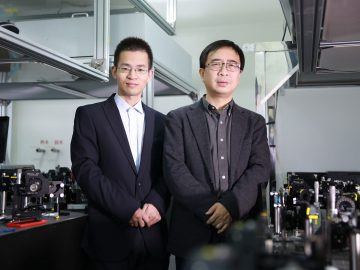Philip Ball in Quanta:
 How do quantum probabilities coalesce into the sharp focus of the classical world?
How do quantum probabilities coalesce into the sharp focus of the classical world?
Physicists sometimes talk about this changeover as the “quantum-classical transition.” But in fact there’s no reason to think that the large and the small have fundamentally different rules, or that there’s a sudden switch between them. Over the past several decades, researchers have achieved a greater understanding of how quantum mechanics inevitably becomes classical mechanics through an interaction between a particle or other microscopic system and its surrounding environment.
One of the most remarkable ideas in this theoretical framework is that the definite properties of objects that we associate with classical physics — position and speed, say — are selected from a menu of quantum possibilities in a process loosely analogous to natural selection in evolution: The properties that survive are in some sense the “fittest.” As in natural selection, the survivors are those that make the most copies of themselves. This means that many independent observers can make measurements of a quantum system and agree on the outcome — a hallmark of classical behavior.
This idea, called quantum Darwinism (QD), explains a lot about why we experience the world the way we do rather than in the peculiar way it manifests at the scale of atoms and fundamental particles.
More here.
